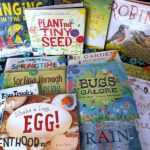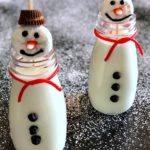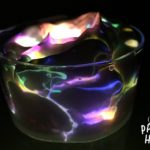Easter is this Sunday! And there’s still plenty of time to create some fun Easter decorations with your kiddos…so we wanted to share one more colorful craft with all of you – Paper Mache Easter Eggs!
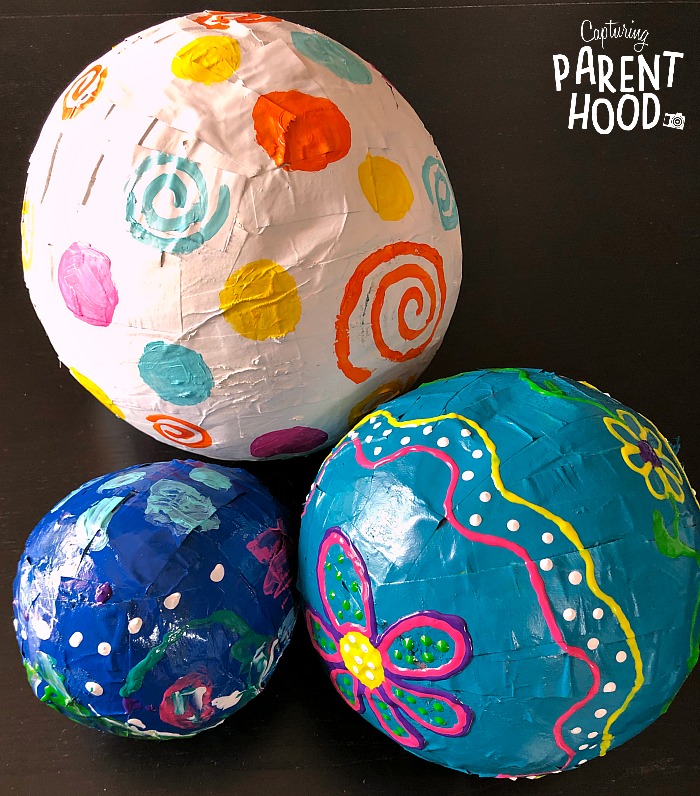
I honestly cannot remember the last time that I did paper mache…it was most likely back in elementary school…which was awhile ago. 🙂 I recall that it was always a lot of fun – albeit messy. So when I was trying to brainstorm new and different craft ideas for our little nugget to experience, I immediately thought of paper mache. As it turns out, it’s incredibly easy to create paper mache eggs with the use of balloons! I also chose to simplify the process a bit, with the use of Mod Podge, instead of whipping up our very own batch of paper mache paste.
Paper Mache Easter Eggs
Step One – Paper Mache
Supplies:
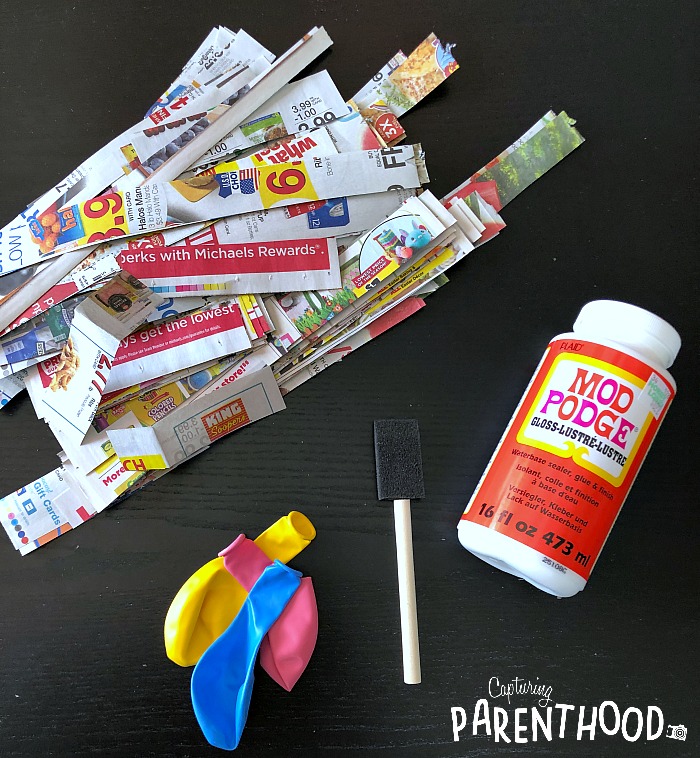
- 1-inch strips of newspaper (in a few different lengths)
- Balloon(s)
- Mod Podge
- Paintbrush/Foam Brush
- Plastic Tablecloth (optional)
- Cardboard Tube (optional)
Instructions:
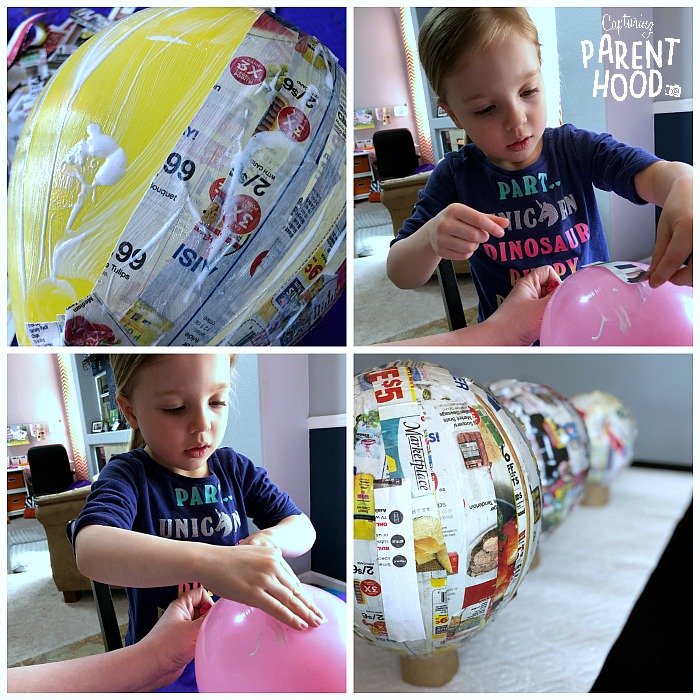
- Paper mache can be a bit of a messy process, so we highly recommend laying a plastic tablecloth down, to protect your table from any Mod Podge splatters/drips. Feel free to cut a cardboard tube (empty toilet paper/paper towel roll) into sections – they make wonderful little egg-drying racks!
- Inflate your balloon(s) to your desired egg size(s). We used three balloons and varied them in size.
- Using a paintbrush, slather a good amount of Mod Podge onto a section of inflated balloon. Cover with strips of newspaper. Brush more Mod Podge on top of your newspaper strips before applying additional strips to cover any holes.
- Continue this process, working your way around the entire balloon. Make sure to leave a hole at the bottom so that you can pop the balloon (once dry).
- Once the entire balloon is coated in Mod Podge and covered in newspaper strips, apply a top coat of Mod Podge, and transfer the balloon to one of your egg-drying racks (cardboard tube sections) and let it dry completely. Mod Podge takes approximately 15-20 minutes to dry.
- Repeat this process for any additional balloons that you want to paper mache.
- Once the first coat of Mod Podge has dried completely, we highly recommend doing a second layer of paper mache. We decided to forgo a second layer, and as a result, our paper mache eggs were a bit more flimsy and much harder to paint/decorate.
- After applying a second layer of paper mache, set the eggs aside to dry once again. We let ours sit overnight (just in case).
- Once the eggs have dried completely, go ahead and pop the balloons. As I mentioned above, we failed to do a second layer of paper mache, so when we popped our balloons, our eggs actually started to deflate as well. If this happens to you, simply take a long-handled spoon or spatula, place the handle inside the paper mache egg, and gently press the egg back into its desired shape.
- Now, you have a couple of choices. If you want to turn your paper mache Easter eggs into little pinatas…feel free to fill them with candy and/or prizes, grab a few more strips of newspaper and some Mod Podge, and close the open hole. You could also just close the hole without placing anything inside. If you choose to paper mache the hole shut, just remember to give your egg(s) more drying time, before moving on to decorating. Since our eggs only had one layer of paper mache, and were fairly easy to dent, we decided not to close the holes. That way, we had the ability to re-shape our eggs if we dented them during the painting process.
Step Two – A Base Coat of Paint
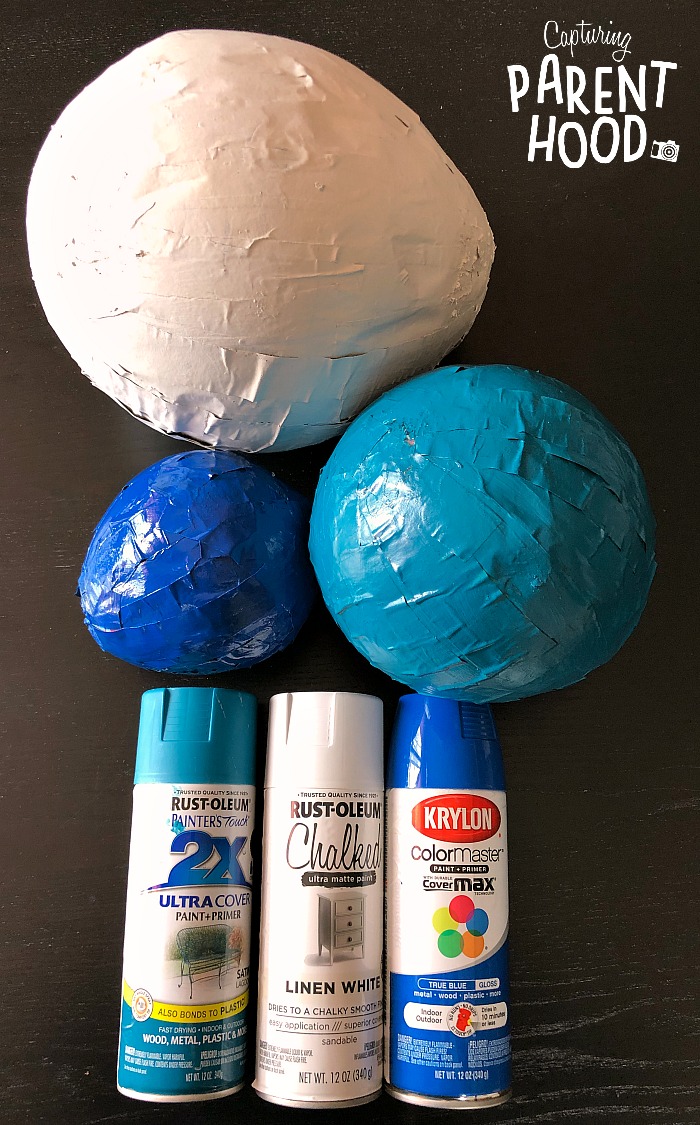
Now it’s time to give your paper mache eggs a base coat of paint. For this step, we used spray paint in a few colors that we already had on-hand (white, teal, and blue). You can use whatever color(s) your heart desires. Just make sure to conduct the spray painting process outside, in a well-ventilated area. I also recommend that an adult complete this step…unless your children are older and capable of using spray paint without spraying it all over themselves, or everything else in the immediate vicinity. 🙂
I applied three coats of spray paint to each of our eggs…letting each coat dry for approximately 20 minutes in between. After the third coat, I left our eggs to dry overnight.
Step Three – Easter Egg Decorating
Supplies:
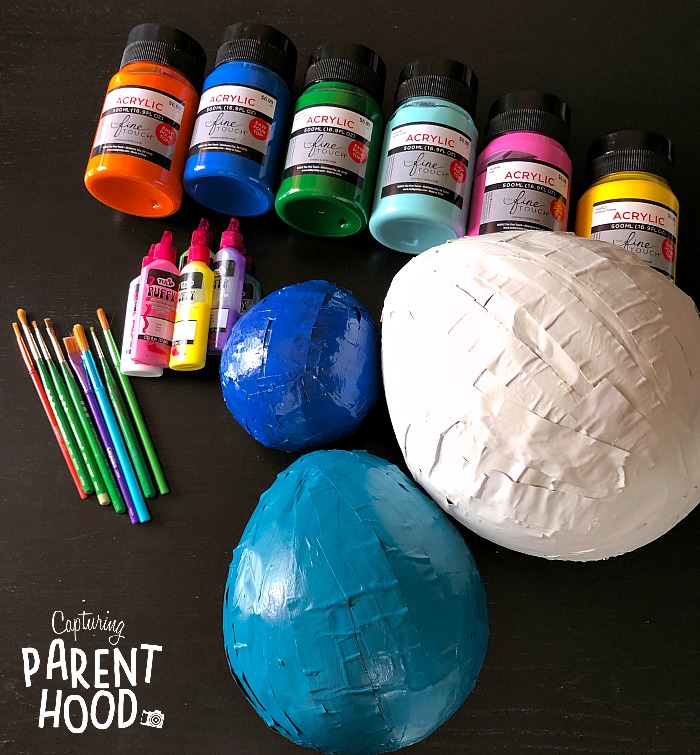
- Painted Paper Mache Easter Eggs (from steps one and two)
- Acrylic Paint (in a variety of colors)
- Puffy Paint (in a variety of colors)
- Paintbrushes (in a variety of shapes and sizes)
- Small Bowls (optional)
Instructions:
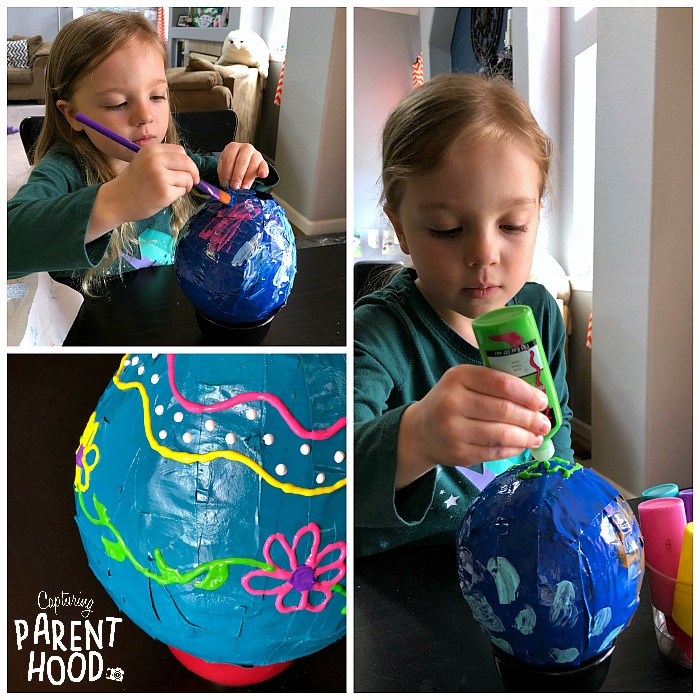
- It’s time to let the creativity begin! Bust out the paint and paintbrushes and start decorating those paper mache Easter eggs!
- We propped our eggs onto small bowls – to hold them upright during the painting process. Once one half of our eggs were fully decorated, we set them aside to dry completely, before flipping them over to paint the other halves.
- We discovered that it was a lot easier to add more detailed designs with the puffy paints. And puffy paint also adds another fun, textural element!
- Once your Easter eggs are fully decorated, set them aside to dry completely.
We had so much fun with this multi-day Easter craft project! We enjoyed getting our hands messy with the paper mache, but our favorite part was painting the designs onto each of our eggs!
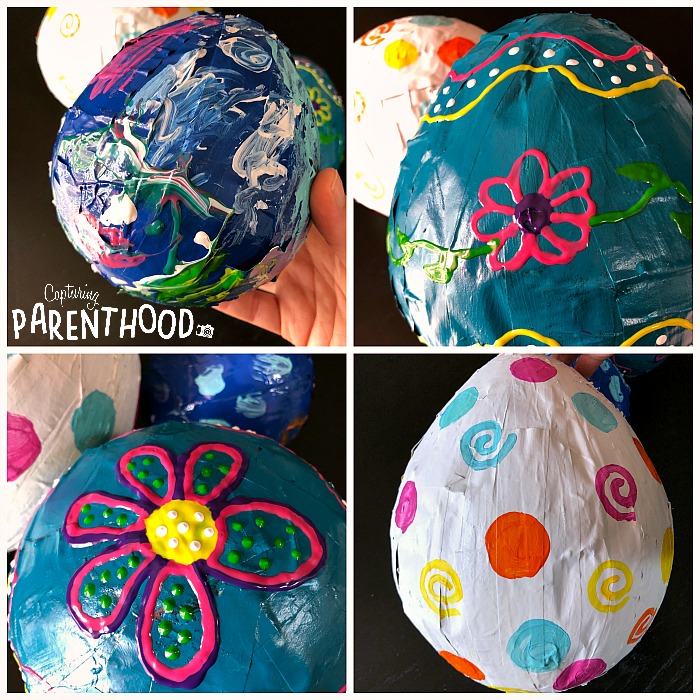
Once you’ve finished with the paper mache…if you have any extra Mod Podge, why not try this Tissue Paper Easter Egg Craft as well?!? And if you and your little ones are looking for another fun, multi-step craft project, you won’t want to miss out on our Salt Dough Easter Ornaments!
HAPPY EASTER!

